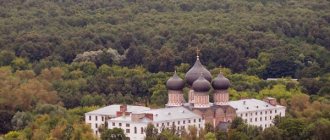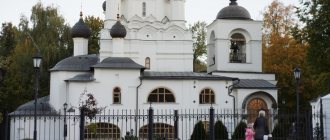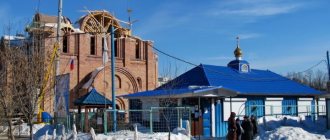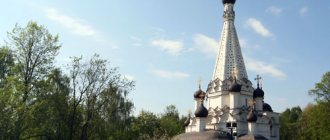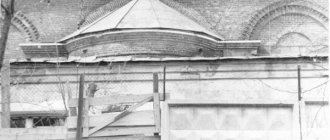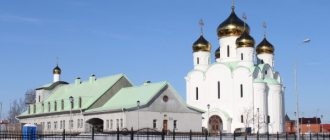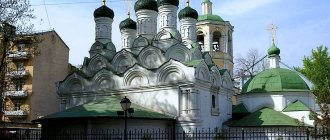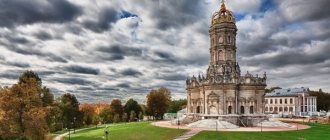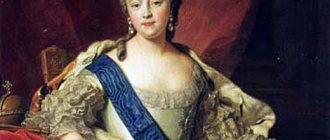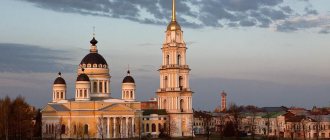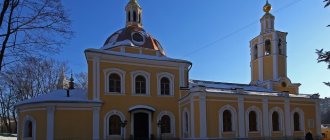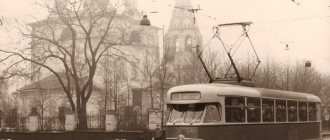Church of the Intercession is an Orthodox church of the Central Deanery. The construction of the church was led by the architect A. M. Salko. This is one of the most beautiful and important temples in Saratov.
Currently, the temple is active - services are held daily. In addition, the temple's activities include charity and work with youth.
© Official website of the Church of the Intercession in Saratov
Church of the Intercession of the Blessed Virgin Mary in Saratov today
The Church of the Intercession of the Blessed Virgin Mary in Saratov is one of the church and educational centers of the city. Thanks to extensive social work, the temple not only fulfills its spiritual function, but also takes a direct part in city life.
With the assistance of the church and the diocese in Saratov, programs are being implemented for people in difficult life situations; there is a volunteer department. In this, its name is symbolic of the very holiday of the Intercession, where the Mother of God gives protection to all who come.
Intercession Edinoverie Church
10/11/2015 11:00 The non-profit organization "Moscow - Saratov" and the Foundation "City in Development" present the project "Portals of History"
In 2015, a new project “Saratov Fortress: Dispersed Museum of the City” was launched, designed to draw special attention to that section of the city territory where the “third Saratov” was located in the 17th century.
It is planned to turn this part of Saratov into a kind of museum of the history of the city - an open-air museum, the caretakers, guides, guardians and owners of which will be the residents themselves. We decided to expand the historical scope of this project, drawing attention to one of the most beautiful places in Saratov - Cosmonatov Embankment. We want to turn ordinary passage arches in houses along the Embankment - from the courtyard to the street - into “portals of history”, to make them passages to the banks of the Volga of old Saratov. One of these museum halls will be the arch in house No. 5. Once upon a time, one of the oldest Old Believer churches in Saratov stood approximately in its place. Design: Alexey Kashanin On the history of the schism 1653
- the beginning of the schism.
Patriarch Nikon is distributing a “Memory” to Moscow churches about replacing part of the prostrations at the prayer of Ephraim the Syrian with waist ones and about using the three-fingered sign of the cross instead of the two-fingered one. 1667
- The Great Moscow Council approves Nikon's reforms, and anathematizes everyone who did not accept the new rules as heretics.
1682
– Archpriest Avvakum was burned alive in Pustozersk.
1700s
- according to some sources, about a million Old Believers (10% of the country's population) are on the run.
Most flee to Poland, the Grand Duchy of Lithuania, and Prussia. 1762
- manifesto of Empress Catherine II, calling on Old Believers who fled outside Russia to return to the country and settle on the lands of the Saratov province between the Bolshoi and Maly Irgiz rivers.
1800
- the beginning of the transition of some Old Believers under the jurisdiction of the Russian Orthodox Church, subject to the preservation of all pre-reform rituals.
For this purpose, a separate structure is being created - the United Faith Church. Materials for the history of the Church of the Intercession
“
Earlier than in Irgiz, a wooden chapel appeared in Saratov, in the courtyard of the merchant Gorin,” Archpriest. Chernyshevsky dates its origins to 1762, but local schismatics claim that it was opened much earlier, and such a statement has nothing against it, especially since in Saratov there was no shortage of rich and powerful patrons of the schism - in which the Starodubites held services without hindrance butts.
Local merchants, led by Baranov, spared no expense to maintain and spread the Old Believers in Saratov itself and in its environs. In 1772, Baranov obtained permission from the relevant authorities to rebuild the already dilapidated chapel and, to replace it, built an extensive stone chapel in his yard, with domes and a cross, having a perfect resemblance to an Orthodox church. Wooden cells for the clergy were built near the chapel; Subsequently, an almshouse for the elderly and crippled immediately arose, and the place itself passed from Baranov to the Saratov schismatic society. The construction of the Baranovskaya chapel , which later received the name
Pokrovskaya
, lasted for many years with long interruptions, representing for the Saratov authorities something like a chicken with golden eggs;
it is possible that it would have dragged on even longer if not for the assistance of V.A. Zlobin
, who came to the aid of the exhausted builders and gave them the opportunity to finish the job without interference by 1797.
” (N.S. Sokolov. “Split in the Saratov region.” Saratov, 1886).
Vasily Alekseevich Zlobin
(mid-1750s - 1814) - Volsky “eminent citizen”, known for his entrepreneurship, wealth and charity; according to the historian Kostomarov, a man of genius in the field of trade speculation.
The son of a poor peasant in the village of Voskresensky, Alexei Nikiforov Polovnik, nicknamed Zlobin, by the end of the 18th century became one of the richest and most influential people in the Russian Empire. An incident brought him together with the Prosecutor General of the Synod, Prince Alexander Alekseevich Vyazemsky, when he came to his Saratov estate. The prince liked the young man’s business acumen, and he first appointed him to manage the estate, and then summoned him to St. Petersburg. Just a few years later, Zlobin owned wine farms, maintained state-owned fisheries in Astrakhan, owned all the playing cards of the empire, supplied food to Moscow and St. Petersburg and salt to twenty provinces of Russia. Zlobin received a net income of up to 1000 rubles per day, while remaining a fairly simple person. According to the description given to him by one of his contemporaries who met him in St. Petersburg in 1802, Zlobin was “a type of Russian peasant, a man both kind and cunning; he retained the gait, speech, and sayings of his primitive state, in a word, everything, even his clothes and beard.” In a rich Russian caftan, he appeared at the palace on major holidays, and there was not a single person in St. Petersburg who did not know him. Both Zlobin himself and his wife Pelageya were well-known donors to Old Believer churches and monasteries. Thus, Pelageya Zlobina gave one of the women’s monasteries on Irgiz a kokoshnik studded with diamonds for 40,000 rubles. The Zlobin family also helped the poorest segments of the Saratov population a lot. For example, the son of Vasily Zlobin, Konstantin, in 1808–1811. donated 40,000 rubles and a house with a garden for the “establishment” of hospitals for barge haulers in Saratov, Kamyshin, Tsaritsyn and Khvalynsk. From the resolution of Emperor Nicholas I on the schismatics on January 29, 1826:
“
In all things, haste is the first harm;
especially in important ones, especially when the heir must contradict his predecessor; Moreover, I first demand evidence, and then I will take measures that I recognize as necessary, with greater firmness, the more convinced I am of justice .”
“
At the beginning of 1832, Pereverzev* ordered the demolition of wooden buildings in the courtyard of the Baranovskaya Chapel in Saratov, “in view of their dilapidation, threatening those living in them and disgracing the area.”
The schismatics immediately turned to him with a request for permission to build a stone outbuilding and several chambers to house an almshouse in place of the broken down dilapidated shacks. Pereverzev, bearing in mind that the purpose of the construction - an almshouse - corresponds to the goals of the government, which cares about the charity of the poor and helpless, and that the building is completely in accordance with the highest plan confirmed for Saratov, gave permission. The newly built buildings housed 14 men and 76 women, most of them elderly, with some children aged 9 to 16 years; Three charter officers and their families immediately settled down. There are “no special rules” in this almshouse, according to Pereverzev himself in a presentation to the Minister of Internal Affairs dated December 16, 1835, except that those in need must be present at every service. Alms-mongers, or rather hermits, as people of advanced years and not seen in anything reprehensible, enjoyed complete freedom, without any supervision. A school with 24 children was also opened at the almshouse, where education was provided by charter teachers. In addition to the charter officers, there was also a priest at the chapel, who officiated services and services quite openly. The chapel and almshouse, according to the explanation of the trustees, are supported by the amount of candle proceeds and purse collection, i.e. by 1100 - 1500 rubles per year, and from the same money the salaries of watchmen and inspectors were paid and “police duties** were corrected.” If this is how things were conducted in Saratov, in front of the entire administration, both civil and spiritual, then it is easy to imagine what was happening in the wilderness of the districts*** .”
(N.S. Sokolov. “Split in the Saratov region.” Saratov, 1886). NOTES
* Fedor Lukich Pereverzev - Saratov governor from 1831 to 1835. ** In 1843, the Old Believer Baranovskaya Chapel numbered 2,300 parishioners. *** The forced conversion of Old Believers to Edinoverie began in the 1830s under Emperor Nicholas I. According to the “Reference Book of the Saratov Diocese” (for 1912), the Church of the Intercession became Edinoverie in 1844, and was consecrated in 1854.
Boris Moser.
Intercession Edinoverie Church “
The schismatics hid under the guise of Edinoverie, but did not cease to be schismatics;
Of course, unconsciously, out of ignorance, but very characteristically, the Saratov police from that time on created a separate column in their lists with the title “schismatics of the same faith sect.” The external ulcer, accessible to the eye, was covered up with mutual efforts and driven inside the body. Ten years later, this is what Gr. wrote. Stenbock about this inflated Edinoverie: “The Maslennikovskaya Church (the name of the Baranovskaya Chapel after the imaginary reunion) is nothing more than a gathering of secret schismatics, for the most part even patrons of the schism, covering their actions with the guise of Edinoverie .”
(N.S. Sokolov. “Split in the Saratov region.” Saratov, 1886). NOTE
The One-Altar Church of the Intercession of Edinoverie was smaller in size than the neighboring Orthodox Vvedenskaya (Staro-Pokrovskaya), but larger in the number of parishioners.
The “Reference Book of the Saratov Diocese” (for 1912) reports that Vvedenskaya has 117 houses in the parish (234 men, 298 women, including 25 non-Orthodox (10 men, 15 women), 26 schismatics (10 men, 16 women), 8 co-religionists (4 men, 4 women). Pokrovskaya: 176 houses (347 men, 313 women). The church capital of Vvedenskaya was 2260 rubles 53 kopecks, and in Pokrovskaya - 6837 rubles 50 kopecks (and the capital of the clergy was 7950 rubles). In Saratov, as throughout Russia, merchants-Old Believers were one of the first and most significant benefactors. The buildings selflessly built by them continue to serve the people of Saratov. Thus, the almshouse at the Kazan Old Believers Church, built in 1883 at the expense of the merchant Efim Yakovlevich Gorin
, is now (in a rebuilt form) - a residential building on the corner of Chernyshevsky and Grigorieva streets. A significant amount for the first eye clinic in Saratov - modeled on the Madrid hospital, “
accumulating all the best for transfer to Saratov
Anna Vasilyevna Chirikhina
at the beginning of the 20th century .
This clinic still operates on the corner of Volskaya and Bakhmetyevskaya streets. The same Chirikhina, a factory owner famous throughout the city, donated a house that belonged to her and equipped it for the needs of a school for the Saratov department of care for the blind (now a residential building on the corner of Moskovskaya and Michurin). Not far from the Intercession Edinoverie Church, on the corner of Obukhovsky Lane and Millionnaya Street, Chirikhina built an orphanage for boys in 1911. The first children's hospital in Saratov - on Sokolovaya Street - was also built at the expense of the wealthy Old Believer merchant Ivan Aleksandrovich Pozdeev
.
In his will, he indicated that part of his capital should be used for “charitable deeds.” Ivan Alexandrovich’s widow, Daria Semenovna, fulfilled the will of her late husband, and this hospital is still in operation today. We can also mention here the mayor of Saratov in the 1850s, Lev Stepanovich Maslennikov
, who secretly patronized the Old Believers.
A contemporary wrote about his activities: “ he built, among other things, a water supply system, an almshouse at the Edinoverie cemetery, at his own expense he built houses for the poor citizens of Saratov, what is now Maslennikovsky settlements, “Strelka” also, and he also built a boulevard near the new cathedral .
In general, Maslennikov is known for many charitable deeds, although the dark sides of his life were not a secret to anyone at one time .”
Entry from the metric book of the Intercession Church. From the archive of Olga Nosenko During the Soviet years,
under the new government, crosses were knocked off the Intercession Edinoverie Church, the neighboring St. Vladimir's almshouse went to the needs of the Red Army, and the temple itself was transferred to the DOSAAF Naval Club. One of the buildings that stood on the “Baranovsky site” was converted into a garage. However, the Old Believers, who lived here since the middle of the 18th century, were in no hurry to leave their native places. All the houses that stood along the construction line of the new embankment, including both Intercession Churches, the Edinoverie Church and the neighboring Staro-Pokrovskaya (Vvedenskaya), including the orphanage for boys named after the Gudkov brothers and Chirikhina, were demolished in the late 1950s - early 1960s.
1951 Saratov. Naval Club. The Ship Modeling Circle and its leader Pavel Konstantinovich Ivanov From the book “Crystal People” by Stanislav Gridasov:
“
The old woman Klava from the third entrance kept order in the yard. She loved cats and fed dozens of them, strays. She loved to plant flowers and bushes, and our entire yard, except for the sports ground, which she had nothing to do with, turned into a minefield from spring to winter. God forbid the ball flies over the net and crushes the flower, wait for an imperious shout. Climbing a tree or breaking a branch in her presence is unthinkable. Baba Klava walked around the yard, checking to see if the path between the bushes was straight, if the board in the gazebo had fallen off, if anyone was smoking. She clearly considered the yard her property, as if she had a safe conduct for it. She didn't like us or our noisy games. We had to fight for every inch of land. Not only for the area where there is a swing, a slide and a sandbox, this is all on legal grounds for children - we wanted to own the entire yard. It should be said that we were notorious gamers. Not only in football and hockey (and the girls also have badminton), also in Cossack robbers, and tag, and wall games, and “tanchiki”, lining the entire yard with their “cities”. The throw was especially difficult when the blade was clamped between the index and middle fingers, but if it worked and the penknife stuck into the ground, it was possible to move the “tiger” towards the enemy. They rarely fought. Mostly they played. We also played at home. In “Umnovsky” cars, crawling along the carpet, the ornament of which became a racing track. To the magical “states” - having read Lev Kassil, a fellow countryman writer, he lived across the Volga in the city of Engels, visible from my window, which was Pokrovskaya Sloboda before the revolution. States, as expected, fought, made peace, published laws, newspapers and novels, and also held World Cups. My country has two shelves in the pantry. What was it called, my country? I forgot, I only remember that the president was Viktor Kapitonov, a tall green soldier, or rather an officer in a cap, and the best football player was Dmitry Maradonov. President Kapitonov sometimes remembered his youth and went out as a center forward on the same carpet in the hall, only now homemade gates were placed along its edges, and the former racing track served as the boundary of the field: behind it was the out. The best homemade gate is from Sasha Gulyaev. I call him and invite him to visit with my family. In shape, however, they resembled handball ones, but they were made of strong wire, and when the ball flew into the goal, a gauze mesh fluttered in them. Sasha, remember? Sasha remembers everything. His country was called the Livonian Communist Republic (Sasha is passionate about chivalry and writes long novels). Mine is the Maple Leaf Democratic Republic. Well, of course, DRKL! Derekael! My head is full of holes.
But my country encourages everyone to play table hockey.
I have perfectly mastered a technique (not prohibited in the DRKL) when a defender throws the puck not with his stick, but with skates, a direct blow, with all his might. My defenders are as effective as Bobby Orr, and I call the move itself “furzhiks”; it makes the whole frail structure of table hockey crack, like the house of the manufacturer and millionaire Grabbing. Nikolai Nosov in “Dunno on the Moon” had, of course, not “furzhiks”, but “jour fixe”, jour fixe, the day of reception, and for a student of a French special school to mix up the letters - shame and disgrace, but the puck is in the goal, and score on the scoreboard. Faceless blue and red hockey players are replaced in the mind by heroes from the Montreal Canadiens and Toronto Maple Leafs. Winter, I beg my mother for a large laundry basin, fill it with water and put it on the balcony. By morning, the surface of the Forum sports palace is perfectly flat, where the Stanley Cup final is being played out. I play with one hand for the reds, with the other for the blues, and Montreal, of course, wins. First of all, Ken Dryden is excellent. Secondly, Guy Lafleur throws as he wants. Now imagine my happiness, my sadness, when I saw on EBAY, and then bought and received in the mail these figures - one in one of my fantasies, ordinary hockey figures of my Canadian boy-peer. What started when I posted a photo of them on Facebook and shared this seemingly deeply personal memory from the early 70s. Producer, one of the creators of “Comedy Club” Tash Sargsyan shouted: “Oh-oh-oh... Everything is so... The clearing was painted with a blue felt-tip pen, the magical and incomprehensible “labatt” was applied to the sides. Vanya Gidaspov, who grew up in Uzbekistan, admitted that he came up with special foreign surnames for toy hockey players and loudly commented on his matches with his brother. And Dima Ivanov, a Saratov resident, painted the figures to look like ours, the Soviets, and the Canadians. Happy, so rich in play, Soviet childhood, only it is to blame for everything, yes, it is to blame for everything, that’s it, that’s it! My table hockey was simple, Soviet, with tin figures that easily bent and often broke, but Kostya Lapshin had an imported, electric one, he even had a red light behind the goal! For Kostya, everything was generally different from the other boys in the yard. The best Finnish sleigh (not a sled), on which they rode with the whole family along the banks of the Volga. When everyone else was arguing about who should be d'Artagnan today, Kostya, to my deep amazement, chose Athos. And they lived in a huge professorial four-room apartment. His dad had a separate office! A carved walnut table, green cloth, books, some drawings, a magnifying glass. Bookcases with great-grandfather's library, from generation to generation. Having become overwhelmed (they pull me out of the office by the hand, dad cannot be distracted from work for long), I receive two pre-revolutionary photographs of Saratov as a gift. On one of them, Nemetskaya Street rumbles with two trams, on the left is the building of a music school, here, on the corner, in the early 20s, Tosha Kandidov and Zhenya Karasik would wait for the beautiful girl Tosya and take turns carrying behind her a black folder “music” with an embossed medallion of Anton Rubinstein. Across the road is the Zhan confectionery, famous throughout the Volga, in Kuznetsov’s house. If Anton and Zhenya had money, they took Tosya to this pastry shop and treated her to a meringue cake. Only now it’s not Nemetskaya, but Republic Street, and Zhan ran away, and there was famine in Saratov, and the confectionery shop of Nepman Vasilevich. As Kostya gets older, another company appears in Kostya’s apartment, something like a naval club. He and Ilya Yaroslavsky play hockey with us less and less, subscribe to boring magazines like Young Technician, collect ship models and are proud that they can easily distinguish a frigate from a brig. The forest is still dark for me. Kostik’s father Fedor Konstantinovich died a long time ago. The girl Tosya married the pastry chef Vasilevich. Anton Kandidov became the football Goalkeeper of the Republic, and Evgeniy Karasik became a famous sports journalist. Kostya sails along the Volga on the Balamut yacht, made with his own hands, but he already lives in another house. Ilya from the second entrance is the director of a large laboratory in Boston. Masha Koroleva from the third has moved somewhere. The lonely woman Klava left quietly and unnoticed. And I—I collect a little. Sports figures and magazines. Postcards and photographs with views of old Saratov. Well, and more memories, our own and others. On my table - carved walnut wood, green cloth, computer, scanner, books, magnifying glass - there is a plan-drawing of the yard, destroyed in the early 60s during the construction of our elite house on the Embankment. This is her, Baba Klava’s, secret letter, which I found in the archive: Intercession Edinoverie Church, priest’s house, outbuildings, almshouse. I superimpose a plan on my childhood memories and see in the yard not only Baba Klava, but also other lonely old men and women, sometimes powerful, more often quiet. After the revolution, the church was turned into a naval club, but the community remained. The Old Believers lived in our yard for two hundred years in a row .”
What the arch now looks like, standing on the site of the demolished church, October 2015. Photo by Andrey Botov What we want to do:
Restore the arch and turn it into a “portal”.
We have already held a charity auction, at which we collected 84,000 rubles for the first repair work. The architectural and design solutions for the transformed arch are under development. The project implementation period is April / May 2016. We don't want to stop there. Our goal is to make “portals” all 4 arches that exist in the houses on the Cosmonauts Embankment, recalling the Vvedenskaya (Old Intercession) Church, the Holy Cross Convent and the orphanage “Red Town” that existed in its cells after the revolution, Savinov’s house, in which The famous Soviet writer Boris Pilnyak grew up, and in many other important places of coastal Saratov. How you can help us
Restoration and decoration of one arch will cost at least 300,000 rubles.
For those who can help in the implementation of our project, which is intended to become one of the important tourist routes in Saratov, we indicate ways to transfer money. Fund for Assistance to City Development "CITY IN DEVELOPMENT" RUBLE ACCOUNT DETAILS
Recipient: Fund for Assistance to City Development "CITY IN DEVELOPMENT" INN 6450999305 r/account 40703810200000000176 in JSC CB "SYNERGY", Saratov BIC 046311766 kor/account 3010181 0700000000766
Please indicate the purpose of payment: Payment: “Charitable donation for the Portals of History project” Stanislav GRIDASOV
Sberbank card: 4276380024866589 Yandex-money: 41001165608945 Pay Pal
Please indicate “Portals of History” as the purpose of the payment. The material was originally published on the website oldsaratov.ru Subscribe to our Telegram channel. In it we publish the main things from the life of Saratov and the region with comments
History of foundation, construction
The first temple built in the city center at the intersection of the main streets was a wooden temple with three altars. It was erected in 1859 and soon became too cramped; moreover, it was not possible to hold services here in the winter. In 1876, a new design for the temple was established, this time made of stone and almost twice the size of the previous one.
Funds for construction were allocated by local merchants, and donations from parishioners were also collected. Already in 1882, the temple was completely completed, and interior decoration continued until 1884. In 1885, the temple was solemnly consecrated.
Almost immediately the temple actively joined city life. Around the 1890s, a stone house was built here to house a parish school, which is still in operation today. In 1893, a Sunday school was opened here.
In addition to spiritual guidance, the church was engaged in social activities, there was an almshouse and handicraft classes for women. In 1895, a multi-tiered bell tower with an additional chapel was built on the territory.
The Soviet government nationalized all the lands, farm and parish buildings of the temple, but the temple itself remained subordinate to the church and was not closed. The authorities also received houses for the clergy. In 1929, the temple was closed and transferred to the state. Now a dormitory, a kindergarten, and storage facilities have been equipped here.
In 1931, they wanted to blow up the church, for which it was partially dismantled and the bell tower was destroyed. It was not possible to destroy the temple building itself, after which they decided to use it again and restored it. Due to cosmetic renovations, all interior paintings were lost.
In 1992, negotiations began on the return of the temple to the diocese, and the request was granted. In the same year, through the efforts of the parishioners, repair work was carried out in the church and the first Liturgy was served.
From 1992 to 2000, the temple was extensively restored: the temporary belfry, floors, and iconostases were restored. In 2004, the bell tower was erected in its original location. In 2007, internal reconstruction of the temple began, which included replacing the facade and completely painting the walls.
Church history
The temple was built in 1859–1885. The project was carried out by the architect Alexey Markovich Salko.
The temple stopped services in the 20s of the last century. The premises were occupied by students studying at the Institute of Economics. Also, some part of the former church was occupied by artists' workshops. With the change in the ruling regime and ideology, services began to be held in the church again in 1992. The long-awaited consecration of the temple took place in 2000.
In 2007, the temple underwent a restoration procedure. The central dome was replaced, new crosses were purchased for the domes of the temple, and the facade was repaired.
© Official website of the Church of the Intercession in Saratov
In 2008, renovation work continued: the facades were painted, 5 chandeliers were purchased, old domes were dismantled and new ones were installed, the internal surfaces of the temple walls were restored, and all tiers of the bell tower were finished.
On April 10, 2010, an icon of four saints was consecrated in the Intercession Church.
By 2012, the paintings of the temple were updated and, most importantly, the image of Lord Pantocrator under the main dome.
Architect, exterior decoration, architectural ensemble
The architect and author of the project was Russian architect Alexey Markovich Salko. He is one of the most famous Saratov masters; about 10 buildings were built according to his designs, some of them, such as the Prince Vladimir Cathedral, have not survived. In addition to churches, he was also the architect of the county courthouse and the city theater building.
The architectural ensemble is a complex of the cathedral and the bell tower building, united by the same color and exterior decoration. The temple is richly decorated with external stucco, imitation columns, figured and geometric bas-reliefs.
The windows and changes in the architectural figure are emphasized by white elements in contrast to the muted red color in the main color scheme of the cathedral. The building itself is an example of a classic five-domed church with one central and two side entrances.
Interior decoration
After the destruction, the temple completely lost its interior paintings, and only in 2007 did restoration begin, which lasted until 2009. Now the temple is completely painted.
On the walls there are full-length images of saints and martyrs, the empty space is decorated with braid and floral patterns in bright and discreet colors.
Iconostasis of the Church of the Intercession of the Blessed Virgin Mary in Saratov
The upper choirs and ceilings are also fully painted. The temple has several icon cases on different sides of the central chapel. Inside, the temple building is supported by painted square columns. The floor is laid with two-color tiles.
Etiquette for visiting churches and temples in Saratov
Clothes in the temple
When attending church, try to avoid bright colors and short skirts or shorts. Women should ideally wear a long, dark skirt, or trousers, and as a “must”, have their head covered. For men, general rules apply regarding color and longer clothing, and they should have their heads uncovered (hats or caps removed).
The use of any electronic devices in the Temple is not permitted.
If you don't need to keep your phone on in case of an emergency, "Lay aside all earthly cares," as sung during the Cherubic Hymn. Do yourself and others a favor by turning off your phone before entering the Temple to ensure that your time of worship is as distraction-free as possible. If you must leave it on, change the mode to silent.
Behavior in the Orthodox Church.
It is customary not to speak in a loud voice, almost in a whisper, or to avoid talking altogether in church. In general, people behave very reservedly: they do not laugh or smile, they try to be serious and calm. While in church, try not to turn your back to the main altar. Even when leaving the church, people try to approach the main altar, so they move backwards. Avoid crossing your arms and legs, as this may be considered disrespectful. There are no pews in churches, so everyone stands throughout the entire service.
Cross in the temple
The Orthodox cross has its own characteristics. The cross has three horizontal crossbars, the lower crossbar is inclined: the side to the right of Christ is usually higher. In addition, Orthodox Christians cross themselves in different ways: from the right shoulder to the left.
Candles in the temple
Candles are a big part of Orthodox worship. People light candles in front of icons of Saints and Predators. Most often, candles are lit for healthy life and relaxation. One candle is lit per person.
Leaving the Church
Respectful protocol is to leave the church only after the final blessing and after veneration of the cross held by the priest at the end of the Divine Liturgy or other service. If you need to leave early, leave the church quietly and refrain from talking until you leave so as not to disturb others. Those who leave early deprive themselves of blessings. When leaving the Temple, you should turn your face to the iconostes and bless yourself. After leaving the church building, it is customary to stand facing the church doors, worship and bless yourself before leaving.
Shrines and relics
The Church of the Intercession of the Blessed Virgin Mary in Saratov preserves various icons: some of them were saved under Soviet rule, and now returned by parishioners during the restoration of the temple.
A special place in the temple is occupied by an icon with a reliquary, where there are particles of the relics of St. Sergius of Radonezh and the blessed Matrona of Moscow, revered in Russia. The icon was transferred to the temple in 2010.
Also in the temple there is an ark with the relics of 21 martyrs and saints, among them are particles of the relics of the Apostle Andrew, St. Nicholas the Wonderworker, the Great Martyrs Panteleimon, Catherine, and Tryphon.
Don't miss the most popular article in the section: Metro Nizhny Novgorod. Diagram, map, description.
Shrines of the Intercession Church in Saratov
The temple houses an ark, which was made with the blessing of Metropolitan Longinus of Saratov and Volsk. The holy relics of a number of saints are kept in the sacred ark, among them: the relics of the Apostle Andrew the First-Called, the relics of Nicholas the Wonderworker, the relics of the Moscow metropolitans (Saints Philaret, Innocent), the great martyrs Catherine and Tryphon.
Shrines of the Intercession Church, © Official website of the Intercession Church of Saratov
Social work, everyday life
The parish of the temple implements several social projects. One of them is cooperation with the social center for assistance to families and children. Priests and parishioners regularly visit the center; the parish receives items and collects essential items, which are sent to social services.
The parish of the church also cooperates with the city clinical hospital No. 2. In addition to spiritual care, assistance and sacraments, members of the parish provide physical assistance to those who cannot take care of themselves, as well as to those who are left in the hospital without relatives and friends.
The Church of the Intercession of the Blessed Virgin Mary cooperates with the All-Russian Society of the Blind and a children's boarding school for the blind in Saratov. Special tactile books are produced and projects are implemented for visually impaired children and adults.
With the participation of volunteers and Sunday school students, regular exhibitions of tactile books are held, designed to attract caring people. School students take part in creating tactile books for children. Every year, through the efforts of parishioners and children, more than 40 tactile teaching aids are created.
Volunteers from among the church parishioners also take part in the work of the social adaptation center for people without a place of residence. If necessary, they help with food and clothing, conduct conversations and help set up life in society.
The temple has an extensive library, both in book and electronic format: cassettes, audio books, discs.
Temple in honor of the Intercession of the Mother of God
Thrones: in honor of the Protection of the Mother of God, chapels: the right one - abolished, the left one - in the name of the holy righteous John of Kronstadt.
Built: 1859-1885. Architect: Alexey Markovich Salko (1838 – 1918).
Consecrated: October 22, 2012 by Metropolitan Longinus of Saratov and Volsk
Shrines: icon of the Venerable Alexandra the First Lady, Martha and Elena of Diveyevo, into which particles of the holy relics of the Venerable Alexandra and Martha are embedded; On April 10, 2010, Bishop Longin of Saratov and Volsk presented the temple with an icon of four saints: the blessed saints Xenia of St. Petersburg and Matrona of Moscow and the holy saints Sergius of Radonezh and Seraphim of Sarov. The icon has two reliquaries with particles of the relics of the blessed Matrona of Moscow and St. Sergius of Radonezh.
Rector: Metropolitan Ignatius of Saratov and Volsky
Keymaster: Hegumen Evfimy (Mitryukov)
Divine services:
1. From Monday to Saturday Liturgy in 8.00;
2. On Sundays and holidays, early Liturgy at 7.00 , late Liturgy at 9.00 ;
3 Every day there is an evening service at 17.00 , the temple is open throughout the day, the priest on duty is in the temple from 8.00 to 16.00 .
4. Akathists are read: on Saturdays at 16:00 - in front of the “Inexhaustible Chalice” icon of the Mother of God.
Address: 410003, Saratov, st. M. Gorky, 85 (corner of M. Gorky and B. Gornaya streets). Tel. (845-2) 27-30-87.
Website: https://pokrovsar.ru E-mail:
Directions to the temple: minibus No. 62, 73, 94, 8 to the “Bolshaya Gornaya” stop.
Services operating at the temple: Sunday school, library. Sunday school for children is divided into three groups: junior (5-7 years old), middle (8-12 years old), senior (13-17 years old). Children are taught the Law of God, Orthodox iconography, Church Slavonic language, church singing, and handicrafts. Also at the school there is a fencing club, a fine arts club and a children's theater studio "Joy". There is a Sunday school for adults. It teaches the Holy Scriptures of the New Testament, the basics of worship and the catechism. Classes at the school are held on Sundays from 12.00 to 15.00 .
The Sunday school building also hosts training courses for those wishing to receive the Sacrament of Baptism, classes at the St. Romanov Children's Choir School, and a series of Bible talks 6:30 p.m.
There is a parish library at the church.
Church and social activities: The clergy of the temple, with the support of the Sunday school, cooperates with the Center for Social Assistance to Families and Children of Saratov within the framework of an agreement on joint activities, as well as within the framework of the implementation of the joint project “Everything Starts with Love.” The parish provides charitable assistance to the Saratov Center for Social Adaptation for persons without a fixed place of residence or occupation. The clergy of the temple provide spiritual care for patients in the traumatology department of the 2nd City Clinical Hospital in Saratov, and the parishioners of the temple obey the sisters of mercy. There is also cooperation with the Saratov branch of the All-Russian Society of the Blind. The clergy of the temple provide spiritual guidance to the Municipal Educational Institution "Secondary School No. 21", the Municipal Educational Institution "Lyceum of Mathematics and Informatics of Saratov", the Municipal Educational Institution "Secondary School No. 14". The parish has a social service and works with young people.
Sunday School
The parish has a Sunday school for children from 5 to 17 years old. Pupils are divided into 3 age groups. Children are offered the study of the Law of God, the Church Slavonic language, the foundations of morality and liturgics. There is a puppet theater for younger children under 7 years of age. All students are involved in church singing lessons and sing in the choir.
In addition to lessons, children take part in evangelical conversation groups, the Radost theater studio, and fencing teachers work with the children. In the summer, the school functions in the same way: rehearsals continue, exhibitions are organized and clubs continue to work, children visit museums and go on pilgrimage trips.
Sunday school students represent the parish at diocesan and city competitions, and also take part in charity trips and stage plays in various government institutions.
There is also a Sunday school for adults: lessons in reading and interpretation of the Psalter, courses in Christian culture and the history of the church in Rus' are taught here. Additionally, catechesis courses for converts are provided.
Patronal holidays
The central altar of the church is consecrated, as its name says, in honor of the Feast of the Intercession of the Mother of God, which is celebrated on October 14. The throne on the left was consecrated later in honor of the righteous John of Kronstadt.
Righteous John was a well-known preacher, church and public figure and spiritual writer throughout Russia, canonized in 1964. His memory is celebrated on June 14 and October 19.
Also in the temple there is an additional altar, which is consecrated only by the position of the Antimension, the sacred plate, but has not yet been consecrated completely: it is consecrated in the name of the Iveron Icon of the Mother of God, celebrated on February 25.
History[edit]
Before the revolution: In 1859, on the square at the intersection of Aleksandrovskaya (modern M. Gorky) and Bolshaya Gornaya streets, a wooden three-altar church was erected through the diligence of the Saratov merchant Voronov. Its main altar was consecrated in the name of the Protection of the Most Holy Theotokos, the side altars - in the name of the holy Apostle and Evangelist John the Theologian and the Prophet of God Elijah and in the name of the holy prophet, Forerunner and Baptist of the Lord John, the martyr Natalia and the venerable martyr Theodosia. However, this wooden church was cold and could not accommodate all the parishioners.
In the mid-1870s, diocesan architect Alexei Markovich Salko completed a design for a new stone church. In 1876, the project was sent to the Technical and Construction Department of the Ministry of the Interior. Upon approval of the project, construction began, which was carried out at the expense of parishioners.
By 1883, the building was built, and its interior decoration began, which continued until the end of 1884. The famous artist-academician Lev Stepanovich Igorev, a native of Saratov, a graduate of the Saratov Theological Seminary, painted the temple and painted the icons of the two chapel iconostases.
On January 20, 1885, the temple was consecrated. The new stone church also had three altars, but its side altars were different: the right one was in honor of the Kazan Icon of the Mother of God, the left one was in the name of the Most Holy Life-Giving Trinity.
In 1895 (according to other sources - in 1897) construction of the bell tower began. On the lower floor there was a temple in honor of the Iveron Icon of the Mother of God, consecrated on May 28, 1902.
As of 1912, the church clergy consisted of three priests, a deacon and three psalm-readers, who lived in church houses located on Bolshaya Gornaya Street. The parish consisted of 1,159 houses, in which 5,839 parishioners of both sexes lived.
At the temple there was a parochial school, which was located on the second floor of a large stone house standing next to the temple. Later, women's Pokrovsky handicraft classes were also located here. The lower floor of the building was occupied by the city almshouse. In 1893, a Sunday school was opened at the church. In addition to the usual subjects - the Law of God, reading, arithmetic and writing - the program included Russian history, geography, and hygiene. The school was taught by teachers from secondary and lower educational institutions in Saratov.
During the years of Soviet power: It is known, however, that in 1918 all the property of the parish, except, apparently, the church building, was taken away by the Soviet government. During the renovationist schism, in September 1924, the clergy of the church remained faithful to the Patriarchal Church. According to the resolution of the Lower Volga Regional Executive Committee of December 19, 1929, the temple was closed, and the building was transferred to the dormitory of the Planning (Economic) Institute. The bell tower was adapted for a kindergarten. In 1931, the church domes and bell tower were dismantled. An attempt was made to blow up the temple itself, which ended in failure. The wall paintings of the temple were partially knocked down together with the plaster, and partially whitewashed. In the 1970s, the temple building was transferred to the workshops of Saratov artists, which were located there until the building was returned to the Saratov diocese.
In our time: The church building remained in a partially destroyed state and was returned to the Church in January 1992. About three hundred tons of garbage had to be removed from the disfigured temple before it became possible to even begin to restore it. On February 1, 1992, repair and restoration work began with the help of parishioners. The first liturgy took place on Lazarus Saturday, April 18, 1992, in the cleared and partially repaired left aisle.
The director of the Saratov Aviation Plant, A.V. Ermishin, paid for the church domes ordered from the Engels Metalworks Plant, which were subsequently installed on the drums of the temple building.
A significant part of the restoration work in the Intercession Church was carried out under the leadership and with the active participation of Archpriest Vasily Strelkov, who was appointed rector of the temple in the summer of 1994. In September 1997, work began on restoring the floors of the temple and the salt of the main chapel. The solea and the floor of the altar (and subsequently the floors throughout the entire temple) were paved with marble. The work was carried out by the 7th construction trust, headed by V.N. Poimtsev.
In July 1997, the architect A.V. Shitov made a design proposal, which contained the location, dimensions and description of the temple bell tower to be restored. Based on this proposal, another Saratov architect, D. V. Golubinov, developed a working design for the construction of a bell tower. During 1998 – 2004 it was restored. On November 28, 2004, a dome was installed on the forty-four-meter bell tower and a spire was fixed. The total height of the bell tower with its spire is 66 meters.
Opening hours for visitors
The Church of the Intercession of the Blessed Virgin Mary in Saratov is open daily from 7:30 to 20:00 on weekdays and from 7:00 to 20:00 on Saturday and Sunday.
| Monday and Thursday |
|
| Wednesday, Friday, Saturday |
|
| Sunday |
|
Where is it located, what is in the surrounding area, how to get there
The address of the temple is Maxim Gorky Street, 85. The cathedral is located at the “Bolshaya Gornaya” stop in the Kirovsky district of Saratov. Bus No. 2, as well as minibuses No. 1, No. 25, No. 66, No. 95, No. 103, follow this route and to this stop.
From the railway station, minibus No. 25 goes towards the cathedral, stopping at the request of passengers.
In the vicinity of the cathedral you can walk to Heroes Square or Saratov Victory Park. Nearby is Theater Square.
Information for pilgrims
There is no hotel for pilgrims on the temple grounds. Here you can order church services, buy candles and icons. There is a bookstore in the temple. Residents of Saratov can sign up for a church library and receive a voucher.
The hostels “SarHaus” and “Boulevard” are within walking distance from the temple: the distance from them to the temple is less than 1 km, you can walk or take a city taxi. Room rates start from 300 rubles. per night.
When traveling to Saratov, you should definitely visit the Church of the Intercession of the Blessed Virgin Mary and become involved in the rich history of the city.
Author: Katya Volkova
Article design: Mila Friedan
